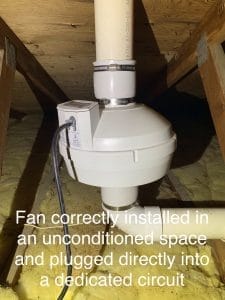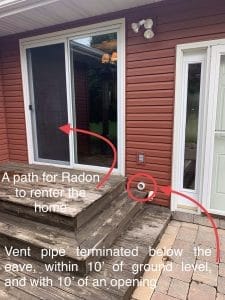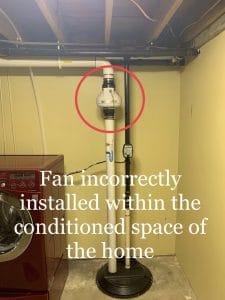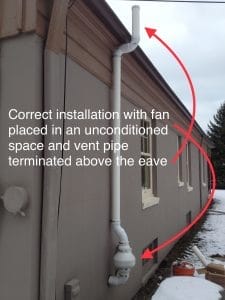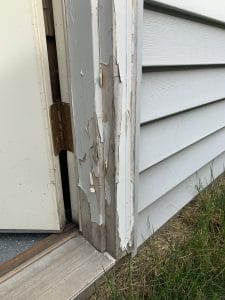Pro-Tech Home Inspection Services
As radon continues to be a focal point in real estate transactions, radon mitigation systems are being found more commonly during home inspections. Often, the systems we encounter are not installed according to published standards. While North Dakota does not require a license to perform radon mitigation work, voluntary certification is encouraged. In Minnesota, the State Legislature passed the Radon Licensing Act in 2015 and fully implemented licensing requirements by 2021. It’s important to be aware that it is illegal to perform unlicensed radon work in the State of Minnesota, including measurement or mitigation (homeowners can still test their own home with passive radon detection devices).
While the licensing requirements vary from state to state, the standard of practice most widely recognized is the SGM-SF 2017, “Soil Gas Mitigation Standards for Existing Homes,” developed by the American Association of Radon Scientists & Technologists (AARST) as a consensus-based standard through years of research and testing. This standard largely serves as the basis for state-specific requirements and is the recognized standard for voluntary certification in states that lack a licensing program, such as North Dakota. Licensing states often have additional requirements such as, in the case of Minnesota, specific system labels and alarms.
Regardless of state, homeowners (and in the case of real estate transactions, REALTORs) should ensure that radon reduction work is performed by qualified professionals who specialize in soil gas mitigation and follow published standards. A post-mitigation follow-up test is the only way to verify if a system is achieving the intended results and should be performed within 30 days (but not less than 24 hours) after system activation, and every 2 years thereafter to ensure the system remains functional. A test should also be conducted if the system is serviced in any way, including accessing sealed sump pits to test or replace the pump.
Listed below are some of the most common errors we encounter with improper/unlicensed/amateur radon systems:
1. System components not clearly labeled, to include the date of the installation and contractor’s contact information.
2. Exhaust termination points do not meet standard (too near windows, doors, ground level, etc.)
3. Radon fans improperly installed in conditioned space (the fan must be in unconditioned space such as an attic or garage, or mounted on the exterior of the home)
4. Improper electrical connections such as extension cords used for permanent wiring.
5. Inadequate or missing alarm/monitoring system.
• Minnesota: The Minnesota Radon Licensing Act was passed in 2015 and fully implemented by 2021 for radon measurement and mitigation providers. These providers are required by the state to meet licensing requirements and QA/QC guidelines for Radon testing and mitigation in any residential dwelling within the state of Minnesota. Here is a link to search Radon Lab/Measurement/Mitigation Professionals in Minnesota https://radon.web.health.state.mn.us/serviceProviders.faces
• North Dakota does not currently have any Radon measurement or mitigation licensing requirements. While any Minnesota licensed professional would meet guidelines recognized by North Dakota, ND does have a list of registered mitigation professionals which is compiled and searchable through the National Radon Proficiency Program (NRPP) https://certifiedradonpros.org/index.html
For additional information on Radon Mitigation, refer to the EPA Consumer’s Guide to Radon Reduction
